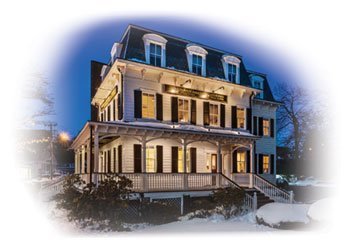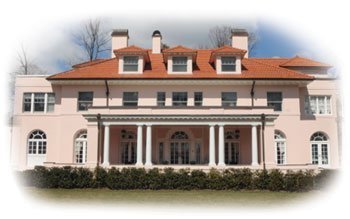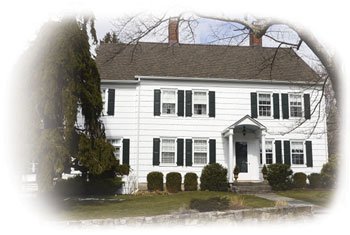About Greenwich Landmarks
Established by The Greenwich Historical Society, this program recognizes historically or architecturally significant buildings in Greenwich. Owners of eligible homes are invited to enroll in the program for a fee. The Historical Society conducts deed research, photographs the house and presents owners with a plaque. There are no restrictions or protections placed on the buildings in the program. As of 2024 there are over 300 buildings documented.
“Preservation does not mean being stuck in the past. It’s a creative way to live with the past.”
Debra Mecky, Greenwich Historical Society Executive Director
 Download the current list of Greenwich Landmarks.
Download the current list of Greenwich Landmarks.
Greenwich enjoys a rich historic past, which is reflected in its architectural landscape. But that landscape has changed considerably since the late 1960s, and many of our older, historic structures have disappeared. Greenwich Landmarks is the Greenwich Historical Society’s response to this dilemma.
The Landmark designation is unique to Greenwich, and structures earning the title secure their rightful place in the town’s history. We now possess rich, accurate, authentic details about these important homes that will be preserved for all time.
Documenting and performing architectural surveys of these properties helps us all understand how historic homes enhance our community, shape the landscape and influence our quality of life. Equally important, the Landmarks program encourages preservation and pride in ownership of older homes.
Origins of the Landmark House Designation
Landmark Homes of Greenwich was established in 1987 as “Signs of the Times” and has presented official plaques to over 300 Greenwich structures and sites to date. Founded by the Historical Society under the leadership of Claire Vanderbilt, one of the town’s tireless advocates for historic preservation, the program was the first broad-based local effort to undertake detailed research and documentation of individual properties and to make the information accessible to the public for research.

Documentation
Documentation is ongoing—properties are added to the program roster on an annual basis. Each property is professionally researched, with all related documents preserved in the Historical Society’s Archives. Owners receive an official Greenwich Landmark plaque, a title search and a formal architectural description of the home. Landmark designation does not restrict an owner’s right to modify a building or site.

Criteria for Landmark House Designation
The Greenwich Historic Landmarks program follows the guidelines of the National Park Service National Register of Historic Places, and we also carefully assess how each property reflects the town’s evolution.
At Least 50 Years Old?
Eligible structures should be at least 50 years old unless they demonstrate eminent architectural or historical significance. The society regularly undertakes “windshield surveys” and research to identify prospective Landmark candidates. With an ever-changing list of hundreds of structures, complete with suggestions from interested members of the public, the Landmark Recognition Committee selects properties to be surveyed by a professional architectural historian to determine if they qualify for Greenwich Landmark Recognition.

Obtaining Landmark Designation
The Committee then reaches out to property owners to take part in the process of Landmark designation. If the owners agree, the Historical Society professionally researches a property’s origins, development and title history. Upon completion of these studies, official documentation and a photograph of the exterior will be added to the Historical Society’s Archives. Owners are presented with a compilation of research on the house, along with a bronze Greenwich Landmark Recognition plaque for display.

While “Landmark Houses of Greenwich” is an historic recognition developed by the Greenwich Historical Society, there are many other levels of historic designation at the local, state and national levels. Visit the Historic Designation section to learn more.
Visit the Archives to take full advantage of this truly unique resource.